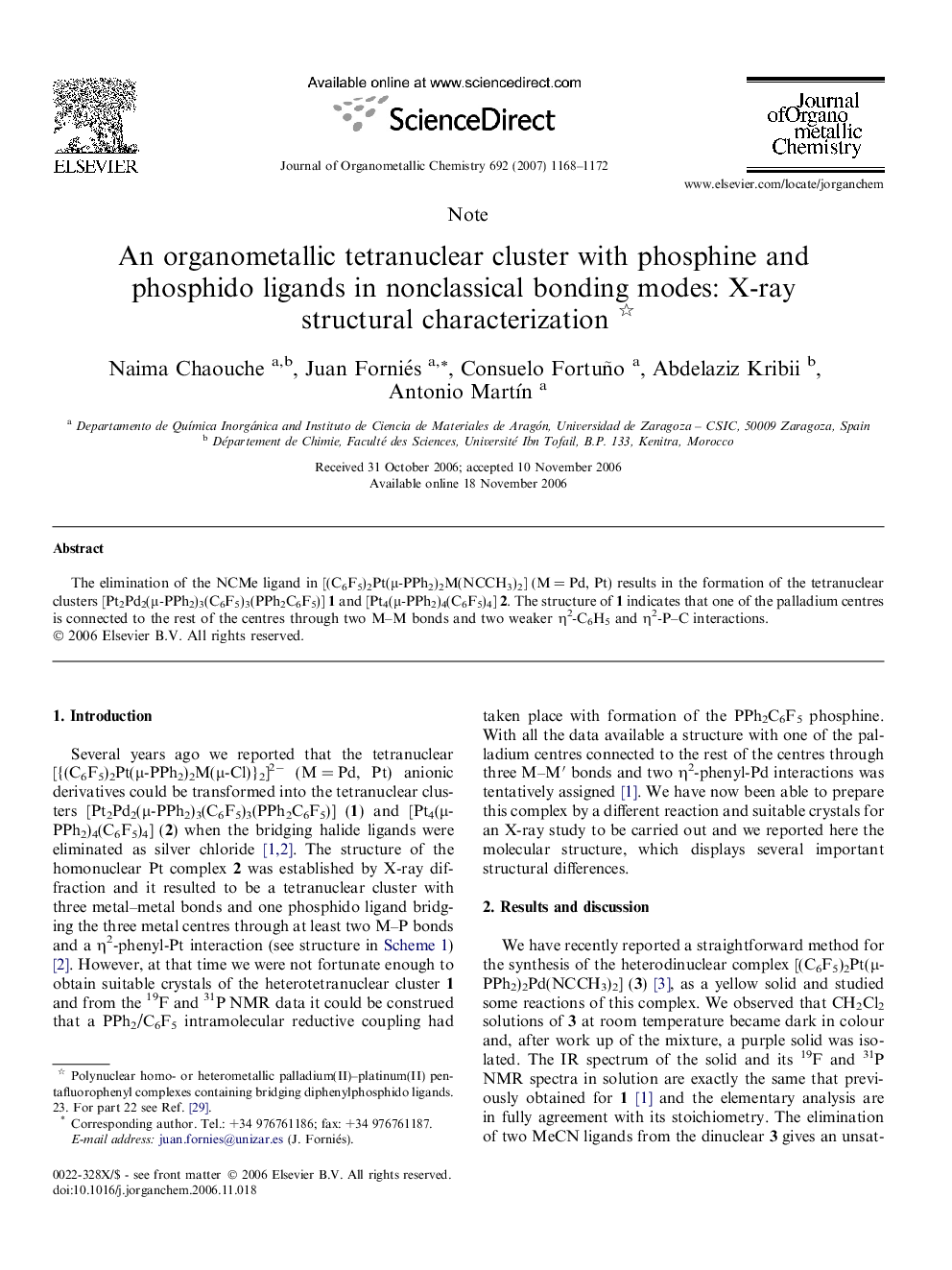| Article ID | Journal | Published Year | Pages | File Type |
|---|---|---|---|---|
| 1323491 | Journal of Organometallic Chemistry | 2007 | 5 Pages |
The elimination of the NCMe ligand in [(C6F5)2Pt(μ-PPh2)2M(NCCH3)2] (M = Pd, Pt) results in the formation of the tetranuclear clusters [Pt2Pd2(μ-PPh2)3(C6F5)3(PPh2C6F5)] 1 and [Pt4(μ-PPh2)4(C6F5)4] 2. The structure of 1 indicates that one of the palladium centres is connected to the rest of the centres through two M–M bonds and two weaker η2-C6H5 and η2-P–C interactions.
Graphical abstractThe elimination of the NCMe ligands in [(C6F5)2Pt(μ-PPh2)2M(NCCH3)2] results in the formation of the tetranuclear cluster 1 through the PPh2/C6F5 reductive coupling. The structure of 1 indicates that one of the palladium centres is connected to the rest of the centres through two M–M bonds and two weaker η2-C6H5 and η2-P–C interactions.Figure optionsDownload full-size imageDownload as PowerPoint slide
